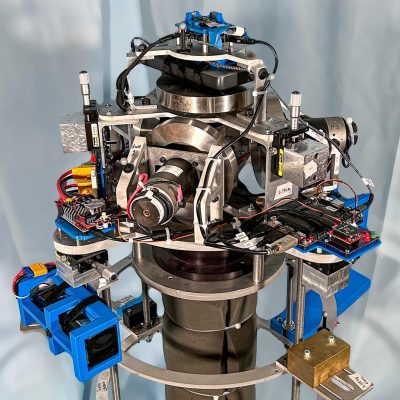Earth & Space Sciences
Climate change is the greatest existential threat facing humanity. Aerospace is both a source of and a potential solution to negative climate impact. But in order to know what changes to make to an aerospace system, we need to better understand aerospace systems as they exist within and interact with the environment impacts the environment.
Aviation is a unique sector in terms of its environmental challenges because in addition to its significant fossil fuel consumption, it is the only human-made source of pollution emitted at altitude. These emissions give rise to phenomena that are currently thought to double (or more) their climate impact relative to the same emissions at ground level. Beyond commercial aviation, the growth in satellite and manned launches also raises the potential for environmental challenges associated with rocket emissions. Additionally, the aviation sector is a significant and growing user of oil, and there are energy security challenges as well as the environmental consequences of using fossil fuels which could serve as a driver for the development of biofuels or other potential energy carriers – cryogenic fuels such as liquefied natural gas or hydrogen, or even batteries.
Aerospace technologies offer great potential for understanding and protecting our environment. Space-based earth observation is important for measuring our changing climate and aviation’s impact on it. The rise of small satellites enables new capabilities in distributed environmental monitoring from space, and drone-based environmental sensing combined with advanced atmospheric modeling offers new ways to manage air pollution, monitor emissions, and observe our planet’s ecosystem. Finally, the potential to use aerospace technologies to engineer the earth system to offset adverse effects of climate change – known as geoengineering or climate engineering – may be the ultimate backup plan if global measures to curb carbon dioxide emissions are not successful.
By reducing the environmental impact of aerospace systems (air and space), using aerospace systems for monitoring, designing for efficiency to reduce impact, implementing autonomy, artificial intelligence, and computational engineering, and understanding and mitigating environmental impacts, we will be able to rise and meet the defining challenge of our generation.
Key Areas of Focus
- Environmental impact of aviation environmental monitoring
- Sciences of space and atmosphere
- Space exploration
- Earth observation
- Energy
- Plasma physics
- Aircraft/atmospheric interaction
- Astrodynamics
Affiliated Labs
- ARCLab
- Aerospace Physiology Lab
- Aerospace Plasma Group
- Engineering System Laboratory
- Gas Turbine Lab
- Human Systems Lab
- International Center for Air Transportation
- Laboratory for Aviation and the Environment
- Small Satellite Collaborative
- Space Propulsion Lab
- Space Systems Lab
- Space Telecom, Astronomy & Radiation Laboratory (STAR Lab)











